Aktinidia Kolomikt is a fairly new plant for our gardens, but this is no less bright and spectacular.
Many gardeners do not grow it because of ignorance about this form of the plant. However, it is enough to recall all the famous delicious fruit of Kiwi, which also grows on the Liaans of the Aktinidiyev family. A actinidia plants are very similar fruits, but smaller and excellent to taste. This representative of woody Lian is ideal for use in landscape design. It can be used for the soaring of the arbors, walls of the house or fence. The taste qualities of fruits widely used in medicine and cooking are also attracted. Of course, to grow a strong and healthy plant Aktinidi Kolomycty is quite difficult, but later you will get a beautiful decoration of a plot with delicious berries.
In this article we will look at the features and description of actinide kolomykti, we learn about its most popular varieties. We will tell you more about the nuances of agrotechnics of growing this culture in our area.
Features and description of actinide kolomykti
Aktinidia Kolomikt is a long-term deciduous wood, which refers to the Aktinidiyey family. This type of actinide is widely used in Russia, since our climatic conditions are not suitable for their cultivation. The natural habitat of Aktindia Kolomykta is East Asia, namely Primorye, Sakhalin, Korea, China, Japan. Here, on the territory of the mixed forests of moderate climate, the wild varieties of actinide kolomykt grow. Opened this type of wood Lian in the 1878 scientist Charles Marie and since then this plant has been widely used in landscape design and home use.
Aktinidia Kolomycta refers to fossil types of plant world, growing when in East Asia. Before the onset of glaciers, these plants grew in a subtropical wet climate, but after icing and returned warmth, the climate became more severe. But Aktinonds adapted to such conditions, spreading around the world.
Actinide Description Kolomykti:
- Aktinhydia Kolomykt is a perennial blooming leaf fall plant growing in the form of a shrub Liana.
- This type of actinidia is considered one of the most frost-resistant, so it is perfect for growing in Russia and other CIS countries.
- This liana increases in a height of 5-10 m in natural conditions, and in the garden can reach 3-7 m, so from the very moment the landing requires supporting support. Shrub Liana is formed by branching or reprehensive shoots.
- Stem actinide kolomycty in thickness only 2 cm, but very durable, can be mastered by any objects nearby.
- The stem is covered with smooth brown bark.
- Rooting system actinide kolomycts urine.
- All shoots are thickly covered with oblong, egg-shaped leaves, gear on the edge and slightly wrinkled. The leaves of actinide kolomykta are the main decorative value of this plant.
- The color of the leaves is changing throughout the year. In the spring of the actinide of the bronze color, at the beginning of flowering, gradually become green, then begged on the tips, and during fruiting white spots become pink and crimson. In the autumn, the whole liana is covered with yellow-pink and reddish-purple leaves.
- The leaves are rather large, in length can reach from 7 to 16 cm.
- Aktinhydia Kolomikt is a downtown plant, i.e. distinguish men and female actinidia. You can only distinguish them during flowering. The total appearance of the plant depends on the type of actinidia.
- Flowers actinide konfall white or gentle pink color. Blossom starts from mid-June and lasts for 20 days.
- Flowers are different, depending on the sexual activity of Aktindia. Women's actinidium blooms solitary colors, and men's - inflorescences of 3-5 pcs. The diameter of one flower on average reaches 1.5 cm.
- Flowers differ in gentle and strong aroma.
- After biting actinidia flowers, fruits appear.
- Fruits of actinide kolomykti have an oblong cylindrical shape, up to 2-2.5 cm long. In color, they are green, the sun can become a reddish shade. Ripen in August, edible.
A variety of varieties of actinide kolomykti
Aktinidia Kolomykt is one of the most popular species of this unusual plant grown in the CIS. To date, there are a large number of hybrid varieties of actinide kolomicts, which are distinguished by external characteristics, flavoring qualities and adaptability to cold gravity conditions.
Aktinidia Kolomykta "Dr. Shimanovsky"
One of the most popular varieties of this type of actinidia. This is a female actinide, which in height can reach 4 meters. It grows rather quickly, per year can grow by 1.5 m. Aktinidia Kolomykta Shimanovsky is distinguished by the special decorativeness of the pesting leaves. In May, foliage becomes green and white, then a pink shade and crimson appears gradually. Such a film is possible only 2-3 years after landing. White flowers. Fruits of up to 2.5 cm in length, green. To the taste of sour-sweet with a clear apple pineapple aroma.
Aktinidia Konomykt "Pineapple"
This variety is rapid growth. Bedometic plant, i.e. having a male and female instance. It is considered one of the most damned varieties of actinide kolomykti. The fruits are quite large, in length reach 3 cm. They have a pineapple taste, hence the name of the variety. Fruits green with reddish tint.
Aktinidia Kolomykta "Adam"
Actinide variety, reaching a height of 4 meters. Also distinguished by the large decorativeness of foliage, which changes the shade throughout the year: with green on white, then on pink and raspberry. Grow grade Adam fast enough. Flowers with small white flowers that exuded a light lemon fragrance.
Aktinhydia kolomykta "Landca"
This Aktinidia variety is quite large. Fruits of oval shape and green. Sometimes there may be longitudinal light strips. Berries are enjoyable by pineapple aroma and sour-sweet taste.
Aktinidia Kolomykt Moma
Actinide variety with a pleasant pineapple aroma and very sweet taste. It is distinguished by the fruits of a cylindrical shape and green, sometimes with dark longitudinal stripes. Also fairly large shrub liaans, height can reach 3-4 m.
Aktinhydia kolomykta "Marmalaka"
The average shrub liana, which can be in height to reach 3-4 meters. In terms of the maturation of fruit, the Actinia "Marmalaka" can be attributed to average. Fruits in the form of oval, slightly fightered on the sides. The color is light green with longitudinal stripes. To taste the fruits are very sweet.
According to these varieties, the following, which are also popular among the gardeners are: "festive", "Sweat", "grape", "fantasy of gardens", "Pomerina", "People's", "Primorskaya" and others.
Men's and Women's Aktinidia Kolomikt: What is the difference
One of the features of actinide kolomykti, like many other species of this plant, the presence of male and female copies, so actinidium is a downtown plant. It is important to know, because when buying only a male plant, you are unlikely to get a crop of fruits. For one male copy of the actinidia, it is necessary to purchase from 2 to 10 female copies, it is so many plants can pollize one men's actinidium. How to distinguish men from female? Let's figure it out.
Aktinidia Kolomykt Masmy
You can distinguish men's from female only during flowering in the appearance of flowers. Male actinia, flowers are collected in thyroid inflorescences of 3-5 pieces. Flowers have a large number of stamens, but they have no pestle.
Aktinhydia kolomykta women's
Women's actinidium is distinguished by the presence of single flowers on long stiffs. Flowers have a large number of stamens and one big pestle. To obtain a crop of fruits, one male copy should have no more than 5 women's actinidium.
Usually, pollen from male actinidium tolerate small insects.
Methods of reproduction of actinide kolomykti
The actinide of the kolomykt multiplies with seeds and vegetatively. Seed reproduction is applied less often, as the plant rarely inherits maternal signs and is not immediately clear what actinidium will grow: men's or female. Most often in gardening uses reproduction with stalling and grain. Let us consider in more detail all types of dilution of actinide kolomykti.
Reproduction of seeds
- Choose on the plants the most ripe and intact fruits. Distribute them and place in a piece of gauze. After that, rinse thoroughly under water. You only have seeds in Marl.
- Seeds must be put on paper and dry well. You need to dry in the shade.
- In December, all seeds need to be placed in water container, which will fully cover the planting material. The procedure lasts 4 days, while every day the water needs to be changed.
- The seeds are then placed in the caprochy stocking and fall into the container with wet sand. Put the box into a warm room with a temperature of not lower than 18 degrees. Weekly seeds need to get and ventilated.
- In January, you can take seed stratification. For this, the seeds are placed in the caprochy stocking and fall into the wet soil. The container with the ground is placed in the refrigerator. It lasts this process for two months.
- Two months later, the seeds need to be placed in the room with a temperature of 10-12 degrees.
- When the adopted seeds appear, they need to be planted in the prepared ground consisting of river sand and the turf.
- When 3-4 leaves appear, seedlings are transplanted into a greenhouse or a greenhouse.
- Aktinidia will bloom only after 3-5 years, and sometimes after 7.
Pencornia reproduction
This is a fairly fast and efficient way of reproduction of actinide kolomykti and producing a large number of seedlings.
- Green cuttings are cut in June, at the moment of fruit growth. To do this, you need to choose strong annual shoots.
- It is necessary to cut 50-100 cm shoots, and then divided into cuttings by 10-15 cm. The main thing is that each cutter has 2-3 kidneys.
- The lower cut is made oblique under the kidney, and the top is straight over the kidney.
- It is important that the cuttings do not dry. Therefore, immediately after cutting, place the planting material in the water.
- Next in the greenhouse prepare the soil by adding river sand and peat into it. as well as mineral fertilizer.
- After an abundant irrigation, plan the cuttings under the tilt.
- The cuttings are plunged so that the average kidney is at a level with the surface of the Earth.
- Cover the cuttings by covering material and spray them 2-5 times daily.
- A month after rooting, remove the gauze.
- In winter, shelter cuttings carefully using foliage, and in the spring you can land at a permanent place.
- Aktinidia kolomikta can be multiplied with and weathered cuttings, which are harvested in late autumn.
- Before the spring, weed-to-wear cuttings need to be stored in the beams in a vertical position placed in the sand.
- It is necessary to plant in the spring, watering is carried out 1 time in two days. The rooting occurs as well as in green cuttings.
Reproduction by chains
Another very simple way to breed actinide kolomykti.
- Actinide reproduction with decodes is carried out in spring when the leaves have already turned.
- On a strong and healthy plant, choose one healthy lower escape.
- Further, the selected Escape bends to the ground and the soil is satisted so that only the top remains above the surface.
- Escape in the soil can be fixed with wire.
- Next, the place of rooting is abundantly watered and mulched.
- Further care lies in watering, spraying, removing weeds.
- The next spring, the young plant is neatly separated from the maternal and transplanted to a permanent place.
Stages of preparation before landing
To get a beautiful and decorative plant of actinidia, must be carefully prepared before landing. It is important to choose or purchase high-quality planting material and pick up on its site the most suitable place. And it is also necessary to prepare the soil.
Stage 1. Selection of actinidia seedlings
Saplings of actinide kolomykti must be purchased in specialized nurseries or fairs. Never purchase the seating material on the natural markets, the roads and strangers. So you risk getting not exactly what you wish.
- Purchase seedlings that are not more than 3 years old.
- Since actinidia seedlings have a very fragile root system, it is better to buy them with a closed root system. It can be seedlings in a container or with tightly closed roots.
- The top of the seedling should also have a neat and healthy appearance.
- Aktinidia is a downtown plant, so if you want to get a harvest of berries, then you must acquire at least two seedlings: male and female.
Stage 2. Selection of Places for Landing
The choice of the right place of landing is the key to getting a beautiful and healthy plant. Aktinondy has short roots, so it is necessary to plant a sapling on a slightly elevated places. In lowlands, it should not be soldered, since this plant does not tolerate moisture.
The optimal place for landing is slightly privided section. Too open solar place can contribute to the fact that Aktinidia will lose their decorativeness.
When choosing a place, take into account the fact that this plant needs a support. It can be made specifically, but you can plant a seedling near existing buildings or trees. For this purpose, fences, arbors, benches, various arches, trees and walls of the house are suitable. You can independently make special lattices of various shapes.
Stage 3. Soil preparation for landing
Aktinidia Kolomikt prefers to grow on fertile sublibious soils, lungs and air. The land under the landing should be full of humus, it is preferable to plant seedlings on neutral or weakly acidic soil. If the soil acidity is raised on your site, then before planting the ground you need to limit.
Before boarding a landing place, carefully disappear, avoid very moistened seats.
The process of landing actinide kolomykty
Aktinidia kolomycta is planted early in spring before the movement of the juice on the plant. As an option, shrub seedlings Liana can be transplanted into open ground and autumn. You need to do it two weeks before the start of frost. However, it should be borne in mind that only young seedlings, which 2-3 years old are postponed in the fall. More adult plants will not be able to endure cold and frost.
Planting actinide kolomykta:
- Previously a few weeks before plant landing prepare the site. Carefully reap place.
- Next, it is necessary to prepare landing pits. Aktinidia Kolomikt very quickly grow up and it needs a lot of space. In addition, in connection with the peculiarities of this species, several instances need to plant. Therefore, strictly observe the distance between the seedlings. It must be about 1-1.5 m.
- The sizes of the landing well should be 50 cm in width and length, as well as 50 cm in depth.
- Next, a good layer of drainage must be placed in the landing pit. Thus, you protect the actinidia from the stagnation of moisture in the roots. As a drainage, you can use broken bricks, small stones and gravel.
- In the pits, pour a bit of fertile soil mixed with humid and mineral fertilizers without chlorine. All this needs to be shaped in a slide on the bottom of the hole and leave for a couple of weeks.
- Before planting, it is necessary to prepare seedlings. Do it stands on the same day when the process itself is scheduled. View the roots and cut all dry and damaged roots.
- At the stunned soil in the pits gently put the seedlings of actinidia and gradually fall asleep soil.
- At the same time, follow the root neck to be on the same level with the surface.
- The soil around the plant should be tamped by hands and plenty. One plant will go about 2-3 buckets of water.
- Turn the rolling circle with a dry peat and cover the paper seedling from sunlight. It must be done until the plant arrives.
- Also, do not forget about the support for shrub Lian. If you put the actinidia kolomikt along the fence or walls of the house, then they are no longer needed. They will be cling to existing structures. Otherwise, make yourself an arc or tag, for which your liana will grow.
Features of care for actinidia kolomykta
Further growth and development of your actinide will depend on attentive and painstaking care. Be sure to follow the watering mode of this Lian, on time to apply funds in the fight against diseases and pests.
Watering
Watering actinidia kolomykti is carried out by air-droplet. This is carried out by spraying from a pulverizer or hose in the morning or evening. During especially dry days, it is recommended to carefully moisten the soil around the plant. By one plant, it is necessary to pour 6-7 buckets. If this is not done, then from the strong heat of actinidium can reset its leaves, and the young people will already have to grow to frost.
Loosening and mulching
The root system of actinide kolomykti lies close to the surface of the Earth, so the soil under the plant can not be dragged. A shallow looser is allowed to carry out very gently and try not to damage the roots. It is necessary to carry out loosening quite often, at the same time removing the weeds that appeared. After loosening the soil, the rolling circle should be meditated. So you reduce the number of weeds, protect the plant from the evaporation of moisture. A dry peat can be used as a mulch.
Undercalinking Aktinidia Kolomykta
The fertilizer of actinide kolomykty mineral fertilizers are the key to the emergence of new shoots, increase winter hardiness and yield. The feeder is held three times per season.
- The first feeding is carried out in early spring, in the process of which it is necessary to make 35 gras of nitrogen fertilizers per square meter, 20 gras of potash and 20 grams of phosphate fertilizers.
- The second feeding is carried out at the time of the formation of uncess. Fertilizers are brought in the amount of 20 grams of nitrogen, 12 grams of phosphate and 12 grams of potash.
- The third feeding should be held in September, after harvesting. At this point, only phosphoric and potash fertilizers of 20 gr contributions.
All fertilizers are made under the plants and gently close in the soil by 10-15 cm. After that, the rich circle is abundantly.
Pruning actinide kolomykta
Aktinondi's shoots grow very quickly, gradually thickening the crown and reducing the harvest. To improve the state of the plant, it is necessary to carry out the forming trimming. However, it should be remembered that trimming can be carried out if the plant has reached 3-4 years of age. It is also important to carry out trimming in summer or in the fall, but in no case in the spring. The plant can start driving. Also, once every 8-10 years, it is recommended to carry out a rejuvenating trimming, during which only a fune in a height of up to 40 cm is left from the plant.
Fighting diseases and pests
The actinide of the kolomykt is characterized by good resistance to the appearance of diseases and pests. And with due care, you will reduce the risk to a minimum. However, sometimes your liana may suffer from some insects and diseases.
Actinide diseases:
- Puffy dew.
- Fruit rot.
- Gray mold.
When the spots appear on the leaves and shoots, which indicate illness, it is necessary to remove damaged areas and treat all the plant with a weak solution of burglar fluid.
Pest actinidia:
Of the most commonly emerging, the following pests can be noted:
- Beetles-sheets.
- Larvae-leaf beetles.
- Caterpillars-spiders.
As prophylactic measures in the spring and autumn, you need to process the soil around the plant and the foliage of burgundy liquid. This is carried out to destroy pests living on Earth, which could then go to the plant.
Use of actinide kolomykty
- It is widely used in landscape design for the soaring arbor, arches, fences.
- Fruits are used to prepare jams, jam and jam, as well as marmalade and pastes.
- Aktinondi fruits can be fresh.
- Plant bark, as well as fruits are used in traditional medicine and traditional to create drugs.
Aktinidia Kolomykta is a beautiful and bright plant, which is preventing decorative benefits and delicious fruits. Such a plant will certainly become a central decoration of the site, demanding only small efforts from you in the cultivation of actinidia.

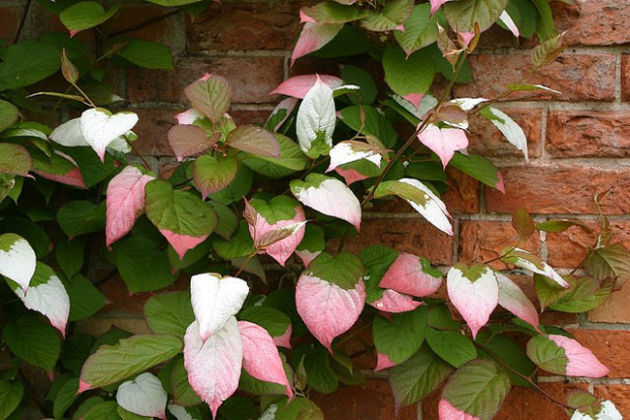
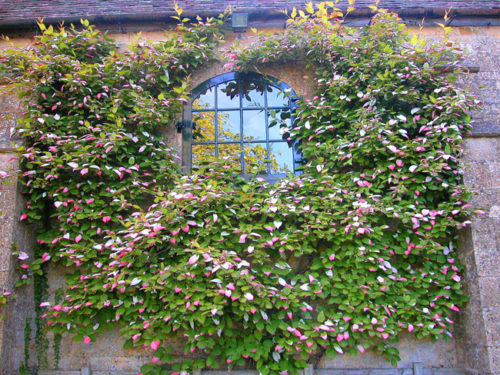
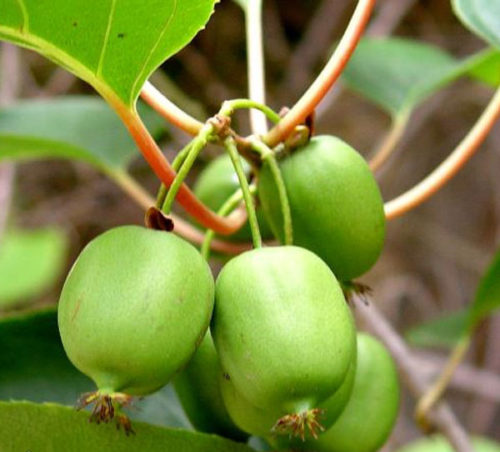
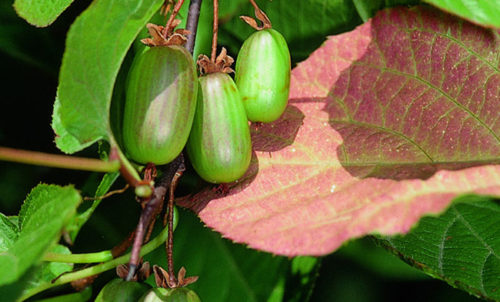
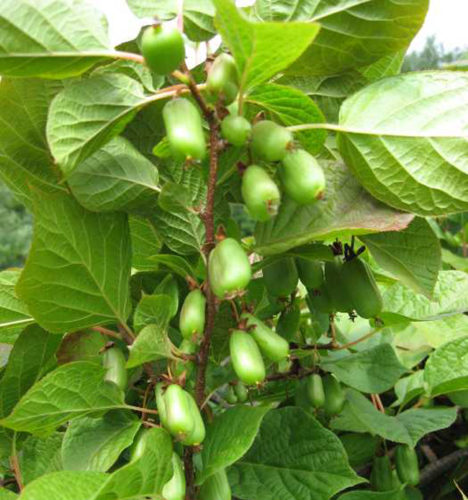

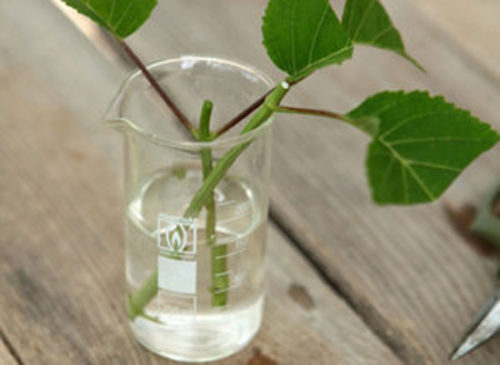
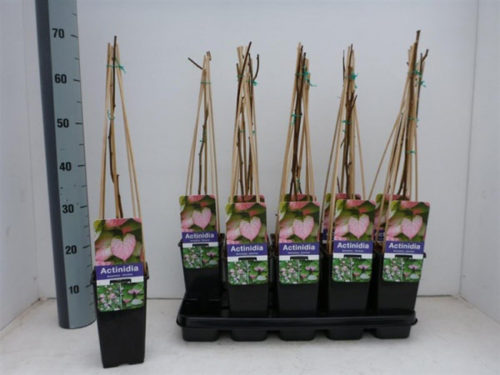
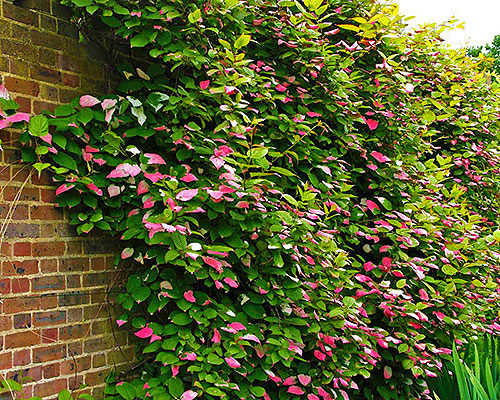
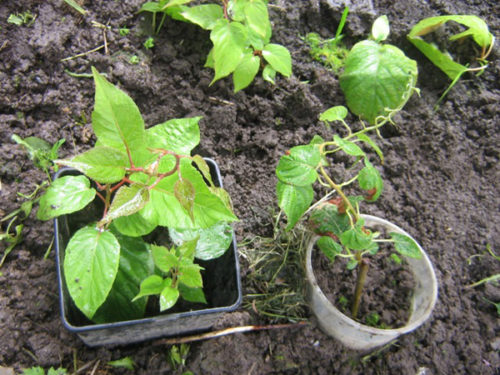
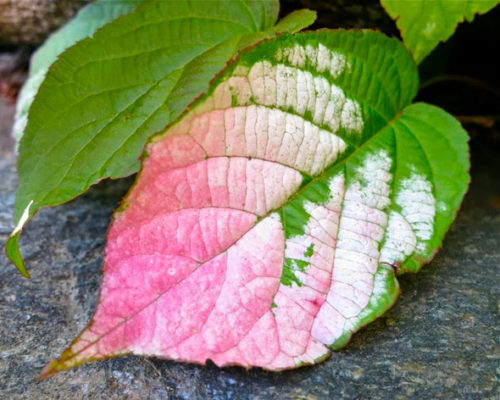

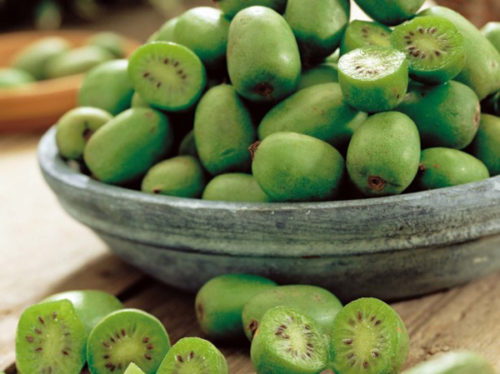












 Start a discussion ...
Start a discussion ...